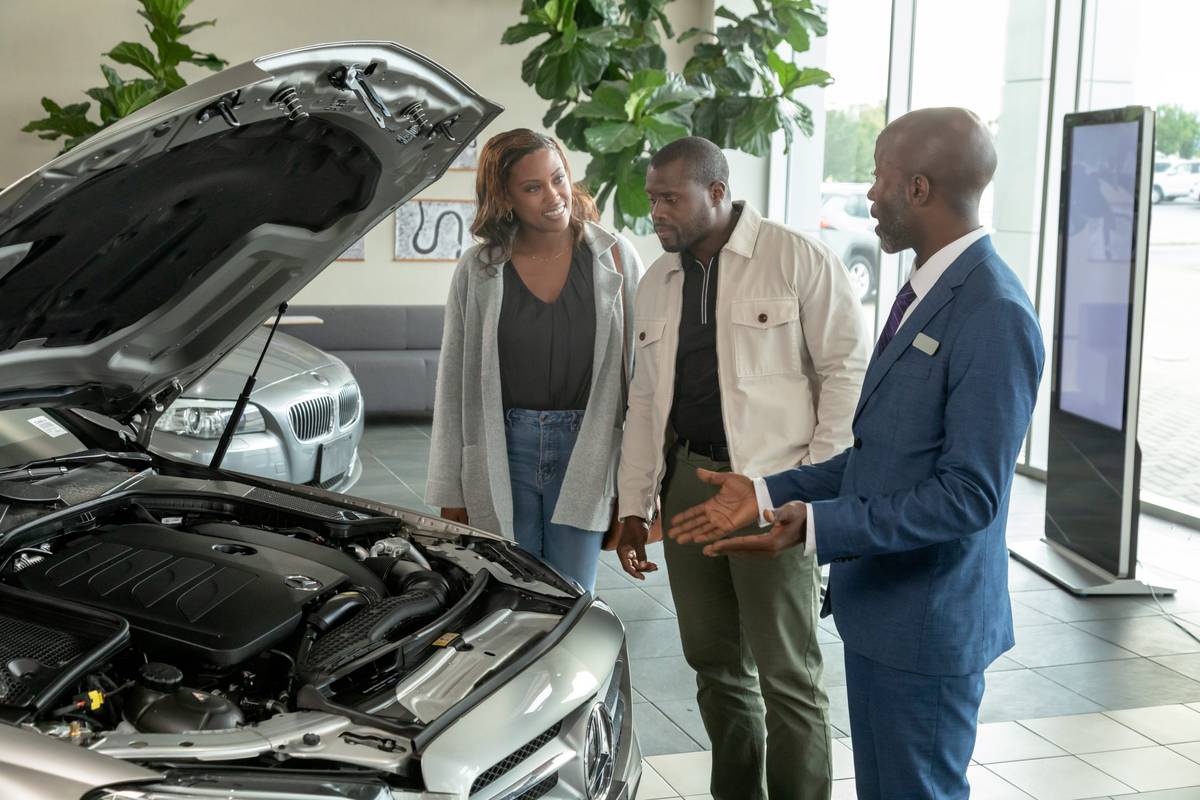What Are Dealer Options and Are They Worth It?


A rude surprise sometimes awaits a new-car shopper who has settled on a vehicle configuration that meets their needs and budget: They show up at the dealer and find the sticker price has been increased significantly with dealer-installed options they never considered and may not want.
Related: How to Negotiate With a Car Dealer
Options on a new vehicle fall into two main categories:
- Factory options are added by the automaker during assembly or when an imported car arrives in the U.S. (called port-installed options). These options are listed on the federally required Monroney window sticker, are covered by the factory warranty and are priced the same at any of the brand’s dealerships. Such factory options also can add to the resale value of the vehicle.
- Dealer-installed options are added by the dealer before the vehicle is offered for sale. They might include equipment like an alarm system or a spoiler, but they are often services such as paint or upholstery treatment or rustproofing. These are not covered by the manufacturer warranty, and pricing is set by the individual dealer. They are typically listed on a supplemental dealer sticker on the window and are added to the automaker’s suggested retail price for the vehicle, sometimes increasing it by hundreds or thousands.
With dealer-installed options, we’re talking about options that were added to the vehicle by the dealer and not selected by the buyer. Many vehicles today offer lengthy lists of automaker-made or automaker-approved accessories that a buyer might decide to add at the dealer, but the difference is that the buyer has made that choice and is paying for options they ordered.
Are Dealer-Installed Options Worth It?
Maybe — but often not. If you really want additional window tinting, you might decide to go ahead and pay for the convenience of having it already done by the dealer, but only you can decide. However, the primary reason dealers add unordered options to cars on their lots is to boost their profit on the sale.
Dealer-installed options are typically heavily marked up — sometimes by 100% or more — and are often more expensive than you would pay elsewhere for the same item or service. If there’s any question later about the quality or durability of the option, that will be between you and the dealer.
Can You Get Out of Paying for Dealer Options?
Here it gets trickier. In the case of something like wheel locks, you might be able to get the option removed; not so, however, with something like paint protectant that has already been applied. That leaves you trying to negotiate away the price of anything you don’t want, and the dealer will probably push back against you. Ultimately, you’ll have to decide what, if anything, you’re willing to pay for the extra add-ons. In many cases, even if you paid 50% of the dealership’s listed price for an option, the dealer would still be making money on it.
You shouldn’t let haggling over these add-ons distract you from your primary goal, which is to negotiate your best out-the-door price for the vehicle. Your starting point for that is the automaker’s sticker price, not the price on the dealer sticker that includes things you never wanted.
The bottom line is that you need to be prepared to walk away if the dealer insists on padding the vehicle price with extras and won’t offer you a vehicle without them. Other dealers might pitch add-ons such as paint protection along with extended warranties and other insurance products as you are closing the sale, but that’s after you’ve already agreed on the vehicle price. You can then accept or reject the extras and pricing offered.
Some Dealer-Installed Options to Avoid
Some dealer-installed options can add value even if you want to debate the pricing, while others seem to have little justification for average buyers or can be obtained at a better price elsewhere. Here are some of the latter:
Rustproofing
Modern vehicles have sophisticated metal technology and corrosion coatings that make aftermarket rust treatments mostly unnecessary, especially if you live in an area with mild winter weather.
Fabric or Leather Protection
Do-it-yourself treatments or cheaper solutions are often available. In any case, such treatments won’t protect upholstery from a lack of regular cleaning and care.
Paint Protection
While this can help prevent rock chips, scratches and damage from UV rays and chemicals, paint protection is typically just a sealant or wax; it doesn’t last forever and needs to be reapplied in order to maintain its effectiveness. Some dealers may even offer a paint-protection film, which is one of the trickiest items to apply, especially on curved or complex surfaces. Regular washing and a good wax will do the job in most situations, but if you’re particularly chip-averse and want to go the film route, it’s best to seek out a trusted installer on your own after taking delivery of the vehicle; improper installation can peel prematurely or even damage the finish underneath.
VIN Etching
Etching window glass with the vehicle identification number can be a good anti-theft measure, but there are DIY kits available for less than $50.
Nitrogen Tire Inflation
Nitrogen gas expands and contracts less than regular compressed air as tires change temperature, allowing you to stay in your tire’s optimal pressure for longer. A tire shop can usually add nitrogen for much cheaper. However, the benefit is so miniscule outside of a track day that we don’t recommend it for most drivers. For daily driving, regular compressed air will be just fine, not to mention easier to source when you need to refill.
More From Cars.com:
- Are Extended Car Warranties Worth It?
- What Does MSRP Mean?
- Sub-$30,000 New Cars Are So Hot Right Now: Report
- What to Know Before Purchasing an Electric Vehicle: A Buying Guide
- More Car Buying News
One More “Option” to Beware
These days, you may find that some dealer supplemental stickers now include something called a “market adjustment” or “additional dealer markup.” You’re getting nothing extra on the car for that. It’s the extra profit the dealer is asking you to pay — over and above the full manufacturer’s sticker price — for the simple privilege of buying that vehicle. Going elsewhere may be your only option to avoid the extra charge.
Related Video:
Cars.com’s Editorial department is your source for automotive news and reviews. In line with Cars.com’s long-standing ethics policy, editors and reviewers don’t accept gifts or free trips from automakers. The Editorial department is independent of Cars.com’s advertising, sales and sponsored content departments.

Former D.C. Bureau Chief Fred Meier, who lives every day with Washington gridlock, has an un-American love of small wagons and hatchbacks.
Featured stories




